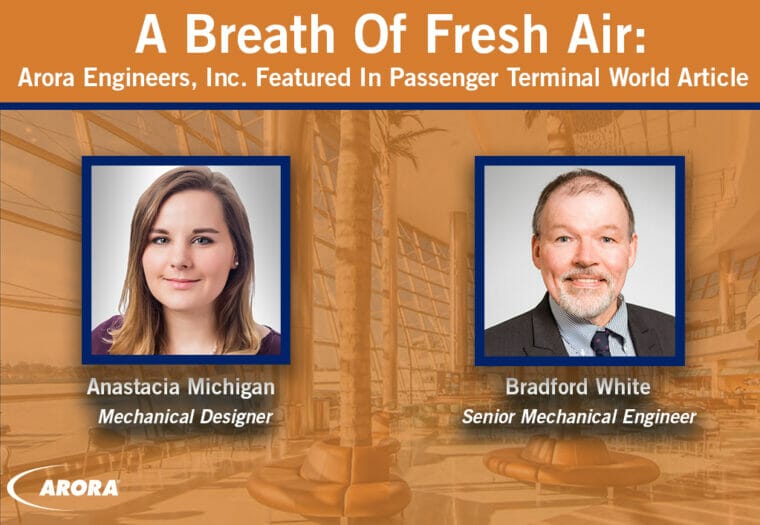News | Mar 17, 2021 | Anne Keener
A Breath Of Fresh Air: Arora Featured In Passenger Terminal World Article
In an article by Passenger Terminal World entitled “A Breath Of Fresh Air,” Anastacia Michigan, Mechanical Designer, and Bradford White, Senior Mechanical Engineer, at Arora Engineers, Inc. (Arora) look at how displacement ventilation (DV) can be used to provide a cleaner, healthier environment for passengers. Popularized in Europe, DV is a relatively new approach in the United States to providing ventilation air at occupant level in large, open spaces such as airport terminals. This innovative, energy efficient method of air supply allows for cleaner ceiling architecture and greater passenger comfort.
As part of Arora’s work on a large Terminal Modernization project on the East Coast, computational fluid dynamics (CFD) modeling was performed by our subconsultant Alden Research Laboratory, Inc. in order to validate the decision to use DV within the new terminal’s main concourse and holding rooms. Like many other airports, this new terminal incorporates large glass walls and clerestory windows, so minimizing visible ductwork and maintaining occupant comfort were crucial design factors. Most of the supply ductwork for the concourse will be located under the floor, not detracting from the aesthetic appeal of the terminal. DV totems supply conditioned ventilation air directly to occupant level.
Anastacia and Bradford go on to explain how DV is a viable solution for new construction projects. Besides the new Terminal Modernization project, Birmingham-Shuttlesworth International Airport (BHM) and San Francisco International Airport (SFO) have incorporated DV into their terminals, and the supply diffusers blend seamlessly into the architecture. Madrid’s Barajas Airport is a creative example of how the architecture can blend with DV to create a functional, unique design. As this ventilation strategy becomes more prevalent in the United States, it will be interesting to see the increase in functional architecture to help maintain passenger health and comfort.
To read the full article, click here.



